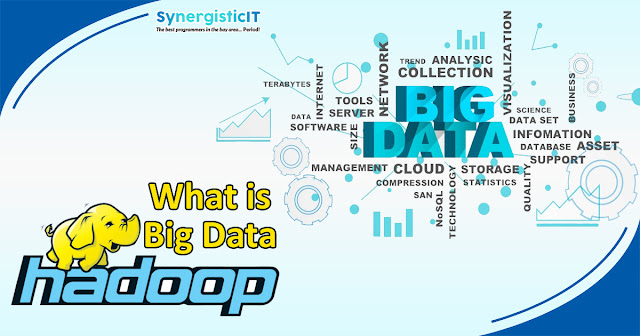What Is Big Data Hadoop
Due to several new technologies, devices, and platforms, the amount of data produced is growing tremendously. You will be amazed to know that 90 percent of data today is generated only in the last two years. And, it is predicted that global data creation will grow more than 180 zettabytes by 2025.
Today’s big data requirements demand a cost-effective, scalable, and efficient data storage tool. Hadoop is a solution to all the big data requirements. It offers a medium to handle and interact with big data. Due to its efficient handling of big data, it is preferred by companies who work with big data.
What is Hadoop?
Developed by Michael J. Cafarella and Doug Cutting, Hadoop is an open-source Java-based software framework used for storing and processing big data. It stores the big data on clusters of community servers.
This allows it to offer the limitless capacity to store any data, enormous processing power, and an ability to handle multiple tasks simultaneously. It is managed by Apache Software Foundation, and licensed under the Apache License 2.0.
Components of Hadoop
Hadoop is not a single application but a platform consisting of components that help in distributed data storage and processing. All these components together form the Hadoop ecosystem.
Some are core components, while others, such as Hive, Pig, HBase, Sqoop, Flume, Oozie, etc., bring add-on functionalities. A big data Hadoop bootcamp is the best place to learn about the core and supplementary concepts of Hadoop.
The core components of Hadoop are:
HDFS: Hadoop Distributed File System
HDFS is the primary component that stores and replicates data across multiple nodes in the cluster. It has two elements: NameNode and DataNode. The HDFS stores metadata on the master server known as NameNode. It manages the file system namespace and controls access to files by the clients. It also has multiple DataNode on a commodity hardware cluster, one per node that manages storage of the node it runs on.
YARN: Yet Another Resource Negotiator
YARN is responsible for managing and scheduling the resources across the clusters. It consists of three major components: resource manager, nodes manager, and application manager.
The Resource Manager is the master component that manages all processing requests. The NodeManager is responsible for containers, monitoring their resource usage, and reporting it to the ResourceManager. The ApplicationMaster negotiates resources from the ResourceManager and works with the NodeManager(s) to execute and monitor the tasks.
MapReduce
MapReduce is a framework that writes applications that process large amounts of data. It works on two functions, Map () and Reduce (), to quickly and efficiently parse the data.
The Map function groups, sorts, and filters multiple data sets in parallel to generate tuples (key, value pairs). The data aggregated from these tuples is later processed by the Reduce () function to produce the desired output.
Benefits of Hadoop
Hadoop plays a notable role in big data and analytics. Data generated every day online is useful only when you can understand what it means. With the help of Hadoop, you can overcome the challenges of handling big data. Here are some of its benefits.
· Scalable: It has no limitation on data storage as it operates in a distributed environment. So, you can easily expand your system to handle more data by adding more nodes. Node is a system responsible for storing and processing data.
· Fault-tolerant: Whenever it stores data in a node, it creates and saves a copy of that data in another node on the cluster. This ensures you have a backup of the data even if one node goes down.
· Cost-effective: It is an open-source framework, so its cost is comparatively less than relational database systems. Also, it uses inexpensive community hardware to store data, keeping the operations economical.
· Flexibility: It gives you the flexibility to store data in its actual form. This means no matter your data is structured, semi-structured, or unstructured, you can store and use it later.
· Speed: The distributed computing model gives it exceptional processing power, while the MapReduce model allows running complex queries in seconds. You can even increase the computing power by increasing the computing nodes.
Due to the several benefits that it offers, Hadoop is increasingly adopted by companies dealing with big data. According to the allied market research report, the Hadoop market will reach $340.35 billion by 2027 at a CAGR of 37.5% from 2020 to 2027. So, you can tap on the opportunities in this sector through a big data Hadoop certification training course and build a successful career in big data.






Comments
Post a Comment